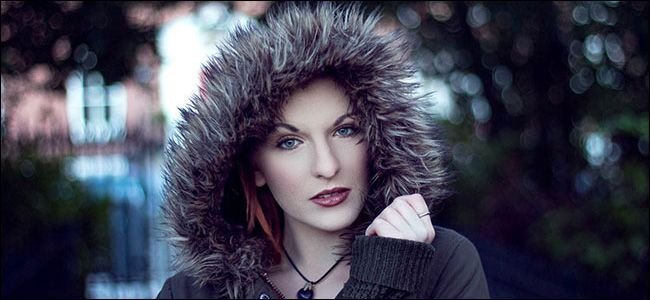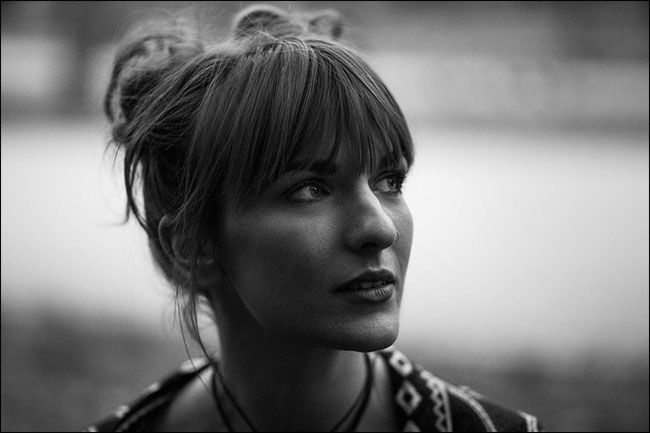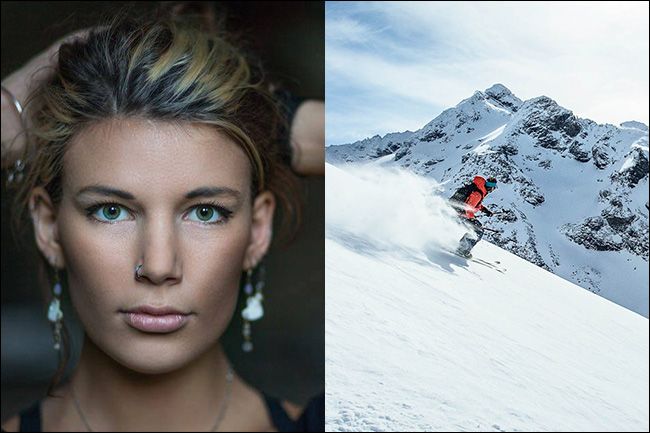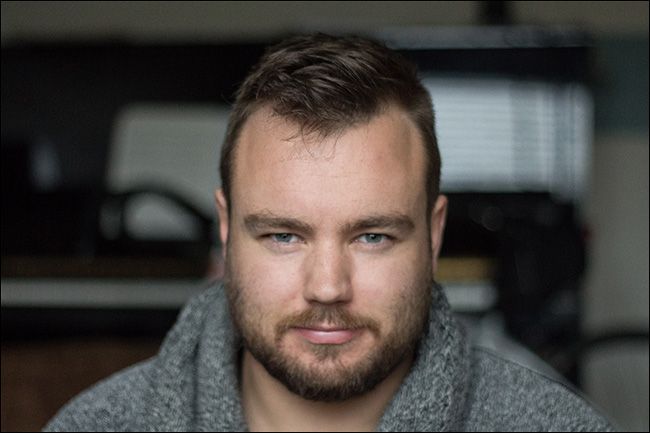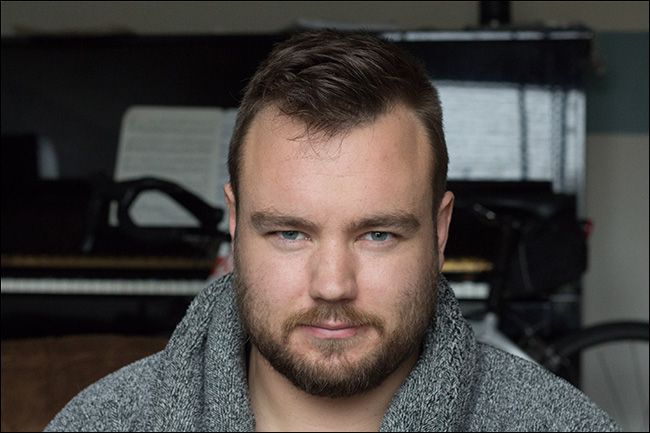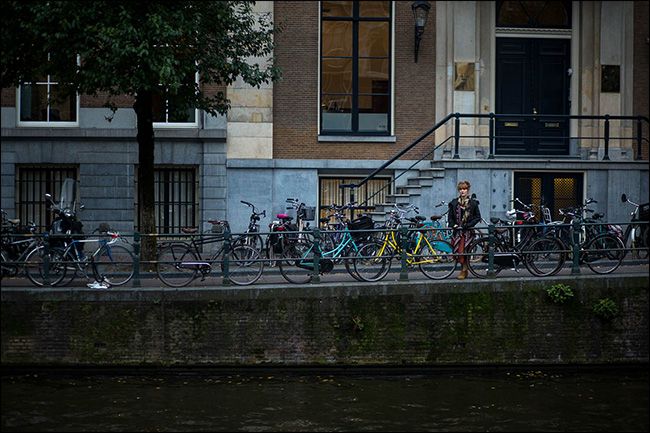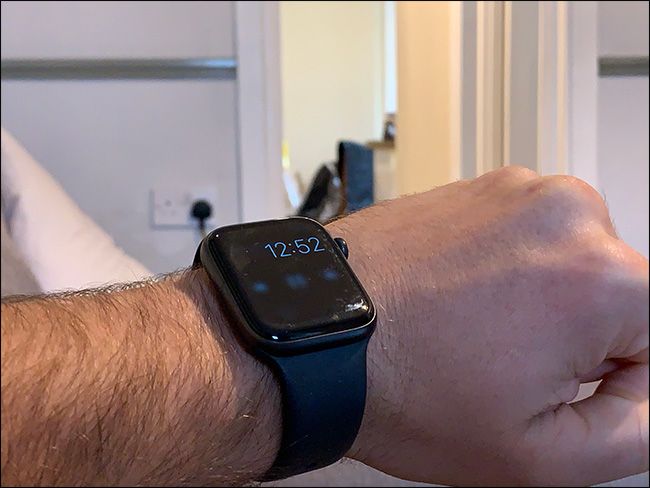Quick Links
It’s impossible to take a photo with a sharp subject and a blurred background (like the one above) with your smartphone---at least without faking it. This is because of the ways in which smartphone cameras differ from larger, dedicated cameras. Let’s look a little deeper.
Why Do Photographers Want Blurry Backgrounds, Anyway?
One of the (supposed) hallmarks of high-quality photography is a blurry background with good "bokeh"---a fancy word that describes the quality of the blur. You especially see it in great sports images and portraits, but also in wedding and street photos, or artsy YouTube videos.
While it’s true a blurry background is common in some types of photography, it’s often an accepted tradeoff, rather than a desired effect. With some setups, photographers have no choice but to have a blurry background and will go to great lengths to make it as unblurry as possible.
In sports photography, a blurred background can be a good way to separate an athlete from the crowd. However, the fast shutter speed necessary to freeze the action and the long lenses they have to use are what force sports photographers to use a wide aperture, which creates background blur. They're far more concerned about capturing the action than getting a cool, blurry background.
In macro and landscape photography, the situation is even worse. Because macro photographers get extremely close to their subjects, they often can’t get the whole thing in focus. Imagine trying to take a picture of a dragonfly and only being able to get its eyes in focus?
Landscape photographers, on the other hand, often want everything in the image to be sharp, from inches in front of the camera to the distant horizon, which is hard with any setup. This is why both types of photography sometimes require focus stacking.
Focus stacking is a technique in which several shots that are all focused slightly differently are blended. These types of photographers try so hard to avoid blurry backgrounds, they add an hour or two of extra work!
Depth of Field and Blur
Depth of field is the amount of the focal plane that's acceptably sharp to the viewer. It’s what determines what’s in or out of focus in a photo.
In an image with a shallow depth of field, just an inch or two of the focal plane is in focus. In the portrait on the left above, it’s really just the model’s eyes. In an image with a large depth of field, pretty much everything is in focus. This is true of the shot of the skier above---everything is in focus, from the snow in the foreground and the skier in the middle, to the mountains in the background.
The depth of field is determined by the focal length of a lens, the aperture to which it's set, the distance from the camera to the subject, and the size of the camera's sensor.
Aperture has the simplest, most intuitive effect on depth of field. The wider the aperture, the more shallow the depth of field will be. The more narrow the aperture, the deeper the depth of field will be. This is independent of all the other variables.
Otherwise, the general rule is that the larger the subject appears in the frame, the smaller the depth of field will be. You can control this by standing closer to your subject (like a macro photographer) or by using a telephoto lens (like a sports photographer).
Two photos shot at the same aperture, in which the subject appears to be the same size, should have similar depths of field, regardless of the lens focal length.
Things are a bit confusing when it comes to sensor size. A smaller sensor reduces the field of view of an image and makes subjects appear larger, reducing the depth of field. However, changing the focal length to keep the subject the same size in the frame counters the decrease in depth of field, and also increases it.
It’s complex and counterintuitive, but the important thing to remember is a photo shot with a smaller sensor has more depth of field (and less blur) than a similar photo shot with a larger sensor.
Why Your Smartphone Can’t Blur Backgrounds
Let’s consider the camera setup on an iPhone 11 Pro. It has the following three cameras:
- A 13mm, fixed-aperture f/2.4, ultra-wide-angle.
- A 26mm, fixed-aperture f/1.8, wide-angle.
- A 52mm, fixed-aperture f/2.0, telephoto.
Unfortunately, though, those focal lengths are lies. At the very least, they're incredibly misleading. At 52mm and f/2, you should easily be able to get really blurry backgrounds. So, what’s going on?
Well, these are full-frame-equivalent focal lengths. More simply put, they’re the focal lengths of the lens you’d have to use on a professional DSLR to get the same field of view. The actual focal lengths are 1.54mm, 4.25mm, and 6mm.
The 1/2.55- and 1/3.4-inch sensors on the iPhone 11 Pro are significantly smaller than those found on even a mid-level point and shoot. They’re a fraction of the size of the sensor in a professional camera.
By using lenses with extremely short focal lengths to get useful fields of view across all three cameras, the iPhone ends up with a large depth of field, even though it has wide fixed-aperture lenses.
If you move closer to your subject, the minimum focus distance of the lenses becomes an issue. They can’t focus on anything closer than a few inches away, so you can’t get a good closeup with the resulting shallow depth of field.
It’s Not That Useful
So, why is it so difficult for manufacturers to create smartphone cameras that can get a shallow depth of field? The main reason is it doesn’t make a lot of sense.
Theoretically, a camera with a periscope lens and a bigger sensor could do it. However, that camera would have to make all kinds of tradeoffs, and it just wouldn’t be as useful for most of the photos people take with their smartphones.
By sticking with wide depths of field (and faking the blur when necessary), smartphone cameras are incredibly useful and versatile.

